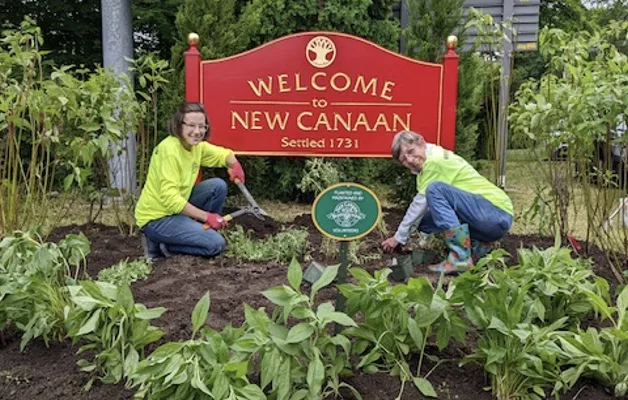By Patricia Chadwick
For more than fifteen years, during the 1980s and 1990s, I spent a considerable amount of time in the Citibank offices in Geneva, Zurich, Lugano, Paris and London, with occasional visits to Barcelona and Madrid. No less than a dozen times a year, I’d fly across the Atlantic for a seven-to-ten-day trip packed with meetings, and more meetings; wonderful meals and equally wonderful wine, and great opportunities to shop (when the U.S. dollar was strong.) I never tired of those sojourns—wanderlust is part of my DNA. However, when it came to November, I was the one who set the dates of my trip. The movable feast of Thanksgiving was the focus of my planning; regardless how much had to be accomplished, I was hell-bent to arrive back on U.S. soil by no later than the Tuesday before Thanksgiving. My European counterparts were enthralled by Thanksgiving. “It seems so much more important than Christmas to you Americans,” was their common observation. And while from a purely commercial point of view, that might be a stretch, there is a way in which Thanksgiving is indeed the most important American holiday.
On one occasion, at my associates’ request, I shared in a detailed email the history behind the Thanksgiving feast and described the menu I would be preparing—it didn’t vary from year to year. A born and bred New Englander, I told the only tale of Thanksgiving I had ever heard, one I’d learned as a small child and long before studying American history in middle school. It was a simple story, but one that was contemporaneously documented in writing at the time by one Edward Winslow. Simplified version: Nearly one hundred Pilgrim voyagers sailed from England on the Mayflower in September 1620, and two months later, they landed on the shores of Massachusetts and established Plymouth Plantation. After a bitterly cold winter, during which half their members died, the spring was more favorable. The Pilgrim religion, characterized by it tolerance, which proved to be of great value to the settlers, who made friends with the Native Americans and learned from them about the local foods and methods of farming. During the harvest period in early autumn of 1621, the Pilgrims gathered with the local Native Americans, who far outnumbered them—to celebrate the bountiful harvest and thank God for His blessings.
My colleagues in Europe were appreciative of my historical narration, and even more fascinated by the menu I also shared—a list that included all the side dishes that as a New Englander I had relished for more than thirty years. And then, out of the blue, one of the Americans in the Geneva office—an expat who’d been living in Switzerland for decades and had become wed to the way of life on the Continent—confronted me with a version of Thanksgiving which I found novel, as well as disturbing. “The first Thanksgiving,” he wrote back, “was held in 1607 in Jamestown, Virginia by the settlers who’d been sent by King James I to spread the Christian religion in the New World. When they landed on the shores of Virginia, they gave thanks to God.” I pulled my history lessons from my memory bank and launched back with a counter-attack. “Kneeling on the ground and thanking God for their safe arrival was not surprising, given that they were all members of the Church of England. But that’s hardly a feast; they hadn’t even settled onto the land. And when they did, there was strife and discord with the local indigenous people, as well as disease and failed crops. Not much to be thankful for after a year of living there.” That banter was all in good humor, but I came to realize that there really was a very different Thanksgiving story told to children growing up in the south.
Thanksgiving, like other holidays—Valentine’s Day and Halloween immediately come to mind, and some might even include Christmas—has its roots in history, in a true story. That history is enshrined in lore that takes vicarious paths around a factual nucleus and, through the telling over and over again, generation after generation, develops its own regional flavor and flair. But Thanksgiving is much more than a feast—its true spirit is best exemplified by the goodness of spirit displayed by hundreds and thousands of American families who find a way to bring together those who have no place to go for the holiday—a child’s college friend whose home is in Turkey, or the elderly lady who lives alone and has no children, or someone who is homeless. In that way, Thanksgiving is truly a religious holiday, when people of all faiths—and even those without faith—gather in the of gratitude and generosity. There is no one wo can be offended by a holiday that brings out the best in our human nature.
As a postscript, this year my husband and I will be the guests of a dear couple, one of whom hails from Maryland and holds on to the Jamestown version of Thanksgiving.
Patricia Chadwick is a businesswoman and an author. Her second memoir, Breaking Glass, with the subtitle: Tales from the Witch of Wall Street, came out on May 14, 2024. It tells of her “growing up” and succeeding in what was then the all-male bastion called Wall Street. Her new book is a sequel to her first Memoir, Little Sister, the story of her childhood in a religious community-turned-cult. www.patriciachadwick.com


